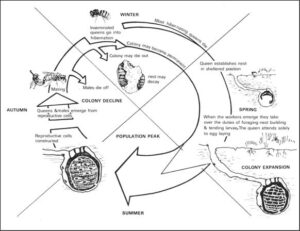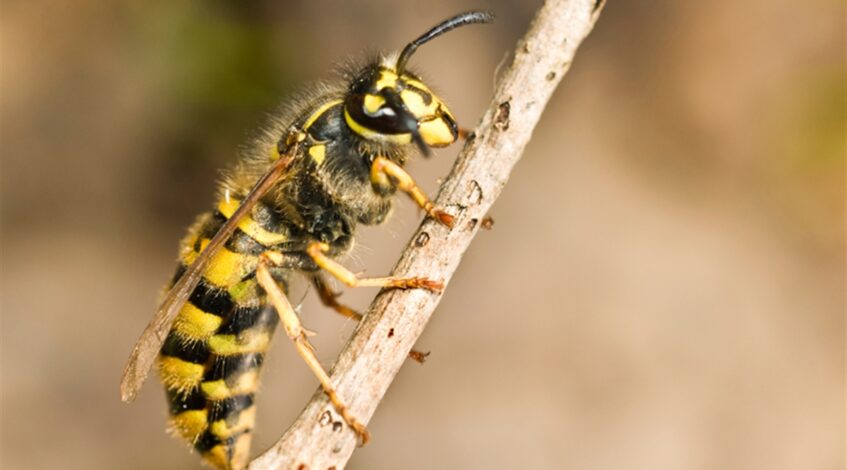One of the most annoying pests Australians have to handle from summer to autumn is the European wasps. Invading homes, crashing parties and BBQs, they are aggressive and nasty pests that no-one wants to deal with. Here is a bit more about them so you better understand them and how to get rid of a European wasp nest.
A closer look at where they come from
As the name hints, this is not a native species of wasp to Australia. They were first seen in Tasmania in the late 1950s and then in South Australia but the 1970s. Today they are firmly established and a real problem. As an introduced species there are no predators that hunt them, so nothing to control them. In Europe where they came from the cold winters keep the numbers lower because only the Queen survives by hibernating. But Australia has a warmer climate all year long so the wasp nests here get a lot bigger and are established for a lot longer. Really until someone comes along to handle the European wasp nest removal.

The wasps will live around humans because of the easy food sources like treats and sugary drinks. They are very aggressive and can repeatedly sting a victim. Their life cycle starts in the spring, the Queen lays eggs in the nest and these hatches. After a few weeks, the larvae become worker wasps, they build the nest larger to make room for the growing numbers. In the summer you have the most wasps and the larger nests. In the autumn queens leave to start a new nest with some of the males. In Europe, as mentioned just the queen survives the winter in hibernation, but in Australia, the whole nest remains.
How do you know this is what you are dealing with?
European Wasps are about the same size as a bee but are more brightly coloured black and yellow and they are more active and energetic than bees. Their legs are yellow and the 2 antennae are black. The body has triangular patterns. Their nests are not always easy to spot because they put them in the underbrush or even in burrows underground. They prefer covered areas like within walls, under rubbish or compost heaps or at the base of trees. Nests are around the size of a basketball. European wasp nest removal should be done with great care.
Are they that dangerous?
The European wasp stings do not usually cause any serious health issues but they are very painful and they can sting multiple times. In some people, they can have more of a reaction, about one in ten people who get stung more than twice become hypersensitive to any stings in the future. Extreme responses mean there is the potential for needing a hospital if they experience anaphylaxis. These wasps release a chemical when they sting so it attracts other wasps to come and join them.
So as well as learning about getting rid of European wasps it is a good idea to take some preventative steps too. While they are predators that eat other insects the main draw for them is sugary foods, unattended plates and foods outside, fizzy drinks, juices and such. You need to keep everything covered when you are eating and drinking outside. Some things you can do to reduce their numbers include:
- Removing fallen fruit from fruit trees when it falls onto the ground
- Take away and clean pet food bowls when they have finished eating
- Put tight lids on rubbish bins
- Also, put tight lids on compost bins
- When having a get together outside make sure food and drinks are covered as much as you can
- Set out wasp trays far away from where people are gathering and away from where the children play
How to get rid of European wasps
When it comes to getting rid of European wasps by far the wisest and safest option is to accept you need to invest in finding a professional pest control company to come and handle it. These are especially aggressive wasps and the combination of that, with being able to sting multiple times, and call other wasps to join them in the attack, means removing the nest yourself is a risk. They have the right gear, protective clothing as well as the right tools for the job. The wasps will defend their nest very aggressively.
Nest removal is best done at the end of the evening or right at the start of the day when they are more sleepy and not as active. Use a red light filter on your torch when you look for the nest as the wasps cannot see red light so will not see you coming. Doing it in the dark is not a requirement though. As soon as they know there is a threat at their nest they will know who to attack, day or night. If you find a nest, or you have them in your garden call in the wasp removal experts.

